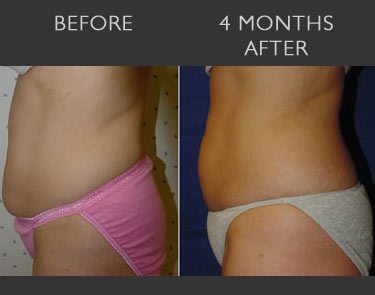News Articles
Charlotte HEALTH&FITNESS magazine, May 2006
What can you do about those stubborn love handles, the “turkey gobbler” under the neck, or that little bit of “junk in the trunk”? There’s plenty you can do about it. Liposuction is an incredibly safe, in-office procedure that can jump start a new healthy and fit lifestyle or fine tune the finest figure. In this two part series on liposuction, I will attempt to demystify the past, present, and future of one of this country’s most popular cosmetic procedures….
WHEN WAS LIPOSUCTION INVENTED?
HOW DOES LIPOSUCTION REALLY WORK?
The oscillating movements of the cannula break up the fat and adhering connective tissue into smaller particles that can pass through the hollow space in the cannula. Back in the 1970’s, the cannulas were huge, almost 1 cm (2.5 inches) in diameter. This created wide tunnels in the adipose and may have caused damage to neurovascular bundles and occasionally may have led to uneven contours, large bruising and fluid collection under the skin in some patients. Today’s cannulas are usually 6 mm or less and provide the liposuction surgeon with much more control, leading to very narrow tunnels in the fat layer, efficient fat removal, and very even contours. An aspirator, or suction machine is attached the hand piece of the cannula (opposite the tip) and provides constant suction to draw the fat out of the hollows of the cannula and into the collecting jar for measurement and ultimately, for biohazard disposal.

DO I FEEL ANYTHING DURING THE PROCEDURE? AM I SEDATED OR KNOCKED OUT WITH GENERAL ANESTHESIA?
Klein demonstrated that very dilute concentrations of lidocaine with epinephrine are not absorbed to the same degree as standard “out of the bottle” commercial solutions of lidocaine. This pharmacologic discovery allowed large volumes of fat to be removed using only local anesthesia. The tumescent technique has been the key to the safety and accuracy of modern liposuction, and has been recognized throughout the world for its importance.
While some specialties continue to perform liposuction in a hospital-based setting, dermatologic surgeons have clearly shown that tumescent liposuction is safe as an office-based outpatient surgical procedure. To date, there have been NO fatalities and very few complications when the tumescent anesthesia technique is employed as a local anesthetic approach without excess intravenous fluids or general anesthesia.
Gilly Munavalli, MD, MHS is medical director of the Goslen Aesthetic and Skin Center in Charlotte, NC. He has been performing in-office liposuction for 5 years and speaks internationally on liposuction, skin cancer surgery, and laser surgery.
